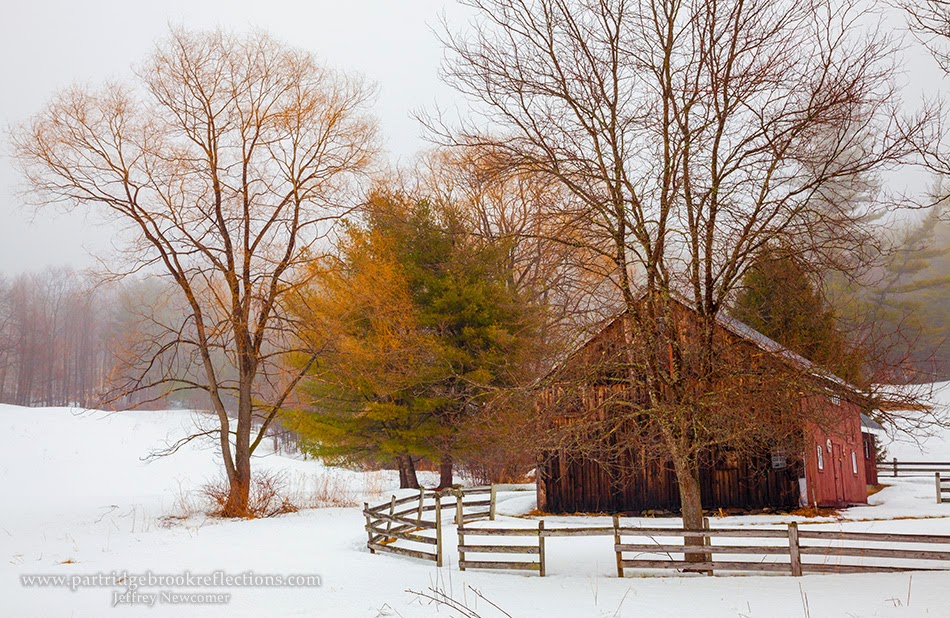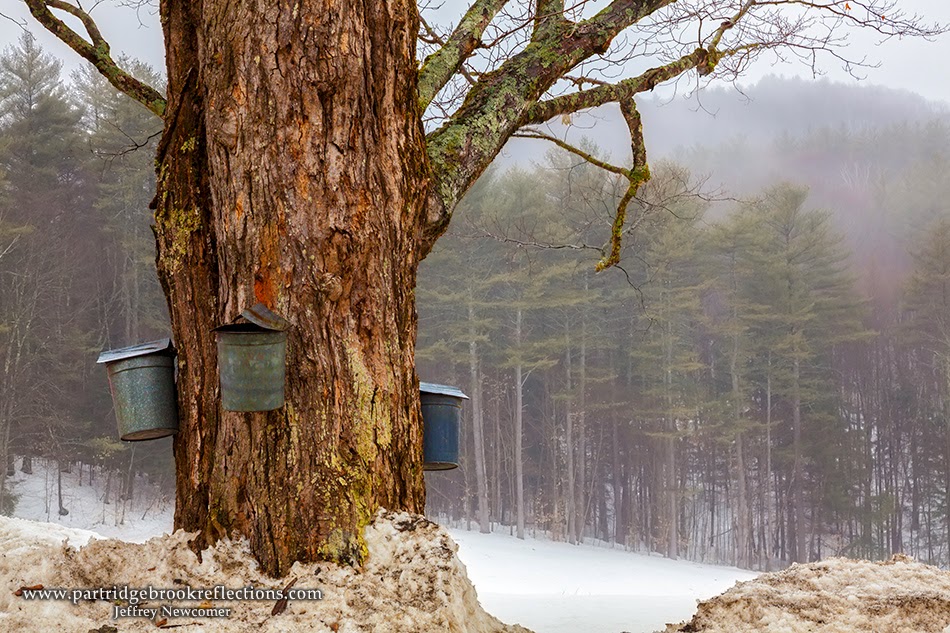Let's talk about "Negative Clarity". This phrase sounds like it belongs in politics and not photography, but Clarity, both positive and negative, is actually a relatively new Photoshop tool that is remarkably powerful in affecting the contrast and mood and of your images
 |
| Mitch bathed in WAY too Much Negative Clarity |
The clarity tool first appeared in Lightroom with version 1.1 and worked in a scale from 0-100, that is, only in the positive direction. In Version 3.3 the tool acquired negative values, ranging from -100 to + 100, and it is the effects of negative Clarity that I will focus on for this article. Clarity is also available in Adobe Camera RAW and, significantly, with Photoshop CC, it is found as part of the Camera Raw Filter menu.
Finding Clarity
The Clarity slider is found at the top of the list of the last three tools in the Basic Panel, above Vibrance and Saturation. Simply stated, Clarity has its effect on the mid-tone contrast of images. It adds
 |
| A little Positive Clarity |
It should be no surprise that moving the Clarity slider into the negative range causes a decrease in mid-tone contrasts resulting in a softening effect. Applied generally, negative Clarity causes an increasingly prominent soft, watercolor-like appearance, but I have generally used it selectively to soften skin tones and blemishes. Taken too far it can create a plastic appearance, but used in moderation it can apply a beautiful soft air-brushing. Not that my beautiful daughter needs any air-brushing!
 |
| Abby Doesn't Need Negative Clarity |
Selective Clarity
Selective application of either positive or negative Clarity can be applied in Lightroom or Adobe Camera RAW using the Adjustment Brush, but now that Clarity is available in Photoshop CC as part of the Camera Raw Filter it can be more easily controlled and finely adjusted. By using Clarity within a Smart Filter I can make adjustments in the intensity of the effect and control its application with a mask.
Early Spring Mist
 A few weeks ago I was out shooting in the soft mist that so frequently develops as snow meets the warm air of our early spring. I love this barn nestled in a valley in Chesterfield, New Hampshire and on this day the distant tree-line was diffused by the hovering mist. Back home I felt that the image didn't accurately reflect the depth of the scene as I remembered. I wanted to
A few weeks ago I was out shooting in the soft mist that so frequently develops as snow meets the warm air of our early spring. I love this barn nestled in a valley in Chesterfield, New Hampshire and on this day the distant tree-line was diffused by the hovering mist. Back home I felt that the image didn't accurately reflect the depth of the scene as I remembered. I wanted to  |
| Fully Applied Negative Clarity |
 |
| Selective Negative Clarity in a Smart Filter |
Buckets
 Sugaring season is upon us and I was recently shooting the buckets clinging to some truly majestic Sugar Maples in Dummerston Vermont. I wanted the tree to stand out against the pasture and the distant, mist shrouded, trees. I found that a touch of negative Clarity worked well. It was relatively easy to create a mask to
Sugaring season is upon us and I was recently shooting the buckets clinging to some truly majestic Sugar Maples in Dummerston Vermont. I wanted the tree to stand out against the pasture and the distant, mist shrouded, trees. I found that a touch of negative Clarity worked well. It was relatively easy to create a mask to  |
| Negative Clarity Masked |

Is Photoshop great, or what!
 |
| Leaves with a Touch of Negative Clarity |
Gaussian Blur, or contrast reduced by decreasing the highlight and black setting in a levels layer. Each has its own unique effect, but I have enjoyed my recent discovery of the soft feel that results from subtle selective adjustments in negative Clarity. Like any photoshop adjustment, it is possible to overdo negative Clarity. It is all a matter of taste. Applied to excess it can lead to a an unnatural sense of viewing the scene through grounded glass, but subtle adjustments can add warmth and depth to an image. Give it a try, if for no other reason than it is a fun term to use especially when you can bathe a picture of your local senator or representative with well deserved veil of softly obfuscating "negative Clarity".


I'm truly dazzled about the information you give in your articles. I should state am exceptionally overpowered by your entire story. It is difficult to get such quality data online these days. I anticipate remaining here for quite a while.
ReplyDeletedll file
I truly appreciate your effort you have put in this article. I am impressed by the way the article is written. Keep on sharing. Now its time to avail roller shutter repairs for more information.
ReplyDeleteThank you for your support! Get additional information by reading this profile online color blind test. Color blind tests can help identify vision problems.
ReplyDeleteThank you for your valuable input. It always fosters meaningful discussions. Don’t forget to read this profile for more engaging topics Free Mental Age Test. Have you tried the mental age test? It can be enlightening.
ReplyDeleteWhen it comes to navigating the ever-evolving world of forex trading, choosing the Best Forex Trading Platform is crucial for success—and in 2025, Winprofx stands out as a leading name among the Top Forex Brokers. Designed for both beginners and seasoned traders, Winprofx offers a seamless, user-friendly interface, real-time market analysis, and powerful trading tools that simplify decision-making in the fast-paced forex market. As one of the Top Forex Brokers 2025, Winprofx provides access to a wide range of currency pairs, low spreads, fast execution, and robust security features to ensure your trades are not only efficient but also secure. What sets Winprofx apart is its educational focus; the platform offers a wealth of learning resources, from live webinars to beginner-friendly tutorials, empowering traders to build skills and confidence. Whether you're looking to trade major pairs or explore exotic markets, Winprofx delivers the flexibility and insights you need. In a market crowded with options, Winprofx proves to be the Best Forex Trading Platform by blending advanced technology with expert support, making it the top choice for traders aiming to succeed in 2025 and beyond. Start your forex journey today with Winprofx—where smart trading begins.
ReplyDeleteBest Forex Trading Platform-
Best Forex Trading Platforms in India
ReplyDeleteThe best Forex trading platforms in India are those that combine strong regulatory compliance, advanced trading tools, and user-friendly interfaces to help traders make informed decisions. These platforms offer real-time market data, fast execution speeds, low spreads, and access to multiple currency pairs. Many also provide learning resources, demo accounts, and mobile trading options to support beginners and experienced traders alike. With features like AI-powered analytics, charting tools, and secure payment options, the top platforms ensure a smooth and reliable trading experience while prioritizing transparency and safety for Indian traders.
Contact us Address – 1st Floor, The Sotheby Building, Rodney Bay, Gros-Islet, SAINT Lucia P.O Box 838, Castries, Saint Lucia Phone no – +97144471894 Website – https://winprofx.com/
Unlock your trading potential with WinProFX
ReplyDeleteUnlock your trading potential with WinProFX, a trusted platform designed to empower new and experienced traders with advanced tools, real-time insights, and seamless execution. With powerful charting features, expert guidance, and a user-friendly interface, WinProFX helps you trade smarter and more confidently in the global forex market. Whether you're aiming to build skills, explore new strategies, or maximize profits, WinProFX provides the perfect environment to grow and succeed. Start your trading journey with WinProFX and step into a world of limitless financial opportunities.
Contact us Address – 1st Floor, The Sotheby Building, Rodney Bay, Gros-Islet, SAINT Lucia P.O Box 838, Castries, Saint Lucia Phone no – +97144471894 Website – https://winprofx.com/